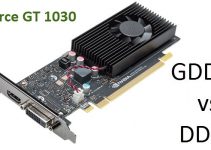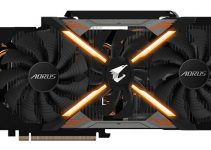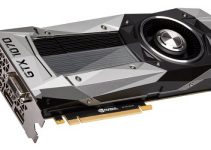Radeon RX 6600 is the smaller brother of the RX 6600 XT, both of which are targeted mainly towards 1080p gaming. RX 6600 is one of the youngest members of the RX 6000 graphics card series from AMD. The card is a cut-down version of RX 6600 XT with some cores locked, has lower memory speed and bandwidth but has greater power efficiency. The competitor to RX 6600 and RX 6600 XT from Nvidia is the RTX 3060, which is currently the youngest member of the Nvidia RTX 30 series of graphics cards. The competition between these three latest cards is quite close because they fall in almost the same price range and performance category. So, if you want to know how these three mainstream cards compete against each other and which one is best for you, then here I am going to compare them on important parameters.
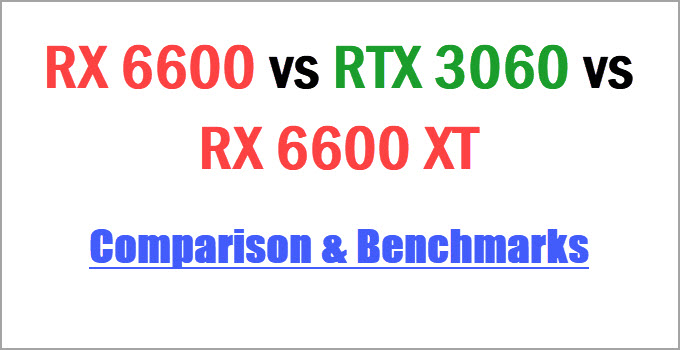
RX 6600 vs RTX 3060 vs RX 6600 XT Comparison
Below is the comparison between RX 6600, RTX 3060, and RX 6600 XT graphics cards based on their specifications, performance, pricing, power consumption, and features.
GPU Architecture
RX 6600 and RX 6600 XT are built on the RDNA 2 GPU architecture based on the 7nm fabrication process. Also, both of them use the same Navi 23 GPU but in different forms, as the RX 6600 uses a slightly cut down version (Navi 23 XL) whereas RX 6600 uses in a full configuration (Navi 23 XT). RX 6600 comes with 1792 Stream Processors, a 256 less than present in the RX 6600 XT that comes with 2048 Stream Processors. RX 6600 comes with 28 Ray Tracing (RT) Cores or Accelerator while RX 6600 XT comes with 32 RT Cores.
On the other hand, RTX 3060 is built on the Ampere GPU architecture on the 8nm fabrication process from Samsung. It comes with 3584 CUDA Cores and 28 Ray Tracing Cores. The card also comes with 112 Tensor Cores that Radeon Cards lack. Tensor Cores are used for Artificial Intelligence (AI) processing and in gaming, it is used for DLSS (Deep Learning Super Sampling). It should be noted that we cannot compare CUDA Cores and Stream Processors directly based on numbers because both are implemented differently in different GPU architectures.
Must Read: CUDA Cores vs Stream Processors Comparison
| RX 6600 | RTX 3060 | RX 6600 XT | |
| GPU Chip | Navi 23 XL | GA106 | Navi 23 XT |
| GPU Architecture | RDNA 2 | Ampere | RDNA 2 |
| Fabrication Process | 7nm | 8nm | 7nm |
| CUDA Cores/Stream Processors | 1792 Stream Processors | 3584 CUDA Cores | 2048 Stream Processors |
| Ray Tracing Cores | 28 | 28 | 32 |
| Tensor Cores | NA | 112 | NA |
Video Memory [VRAM]
Here, the card with the highest video memory and bandwidth is the RTX 3060. It comes with 12GB GDDR6 memory with a 192-bit interface, running at 15Gbps and delivering bandwidth of 360 GB/s. On the other hand, both RX 6600 and RX 6600 XT come with 8GB GDDR6 memory with the 128-bit interface but runs at a different speed. The RX 6600 GDDR6 memory runs at 14Gbps delivering a memory bandwidth of 224 GB/s while that of RX 6600 XT runs at 16 Gbps and delivers a bandwidth of 256 GB/s. While the effective memory bandwidth of the RX 6600 and RX 6600 XT is much lower than RTX 3060 but they can achieve much higher peak memory bandwidth using the 32MB Infinity Cache present on the GPU. In total, when it comes to memory then RTX 3060 clearly has the advantage over the two because of its extra 4GB memory and higher effective memory bandwidth.
| RX 6600 | RTX 3060 | RX 6600 XT | |
| Memory Size | 8GB GDDR6 | 12GB GDDR6 | 8GB GDDR6 |
| Memory Interface | 128-bit | 192-bit | 128-bit |
| Memory Speed | 14 Gbps | 15 Gbps | 16 Gbps |
| Memory Bandwidth | 224 GB/s | 360 GB/s | 256 GB/s |
| Infinity Cache | 32MB | NA | 32MB |
Features
When it comes to features, all three cards are quite similar and support almost all the latest technologies. All the three cards support DirectX 12 Ultimate, OpenGL 4.6, and Vulkan, PCI-Express 4.0, Real-Time Ray Tracing, HDMI 2.1, AV1 decode, Resizable BAR, Microsoft DirectStorage API (to reduce game loading times), variable refresh rate technologies G-Sync/FreeSync to reduce game stuttering. There is no SLI/CrossFire multi-GPU support for these cards. Although all these three cards natively support PCI-E 4.0, the PCI-Express bandwidth of RX 6600 and RX 6600 XT is limited to x8 only. This may not be an issue on a system that supports PCI-E 4.0, but it may degrade performance in the latest AAA games on motherboards or systems that support up to PCIe 3.0 interface only. The Nvidia Card here, GeForce RTX 3060 supports DLSS 2.0 (Deep Learning Super Sampling) which is a next-generation AI rendering technology to increase gaming performance or FPS in supported games. On the other hand, RX 6600 and RX 6600 XT support AMD FidelityFX Super Resolution (FSR) which is an AMD image scaling technology to improve performance in games by slightly compromising on image quality.
| RX 6600 | RTX 3060 | RX 6600 XT | |
| Bus Interface | PCI Express 4.0 (x8) | PCI Express 4.0 (x16) | PCI Express 4.0 (x8) |
| DirectX | 12 Ultimate | 12 Ultimate | 12 Ultimate |
| OpenGL | 4.6 | 4.6 | 4.6 |
| Vulkan | 1.2 | 1.2 | 1.2 |
| SLI/CrossFire | No | No | No |
| VR Ready | Yes | Yes | Yes |
| G-Sync | Yes | Yes | Yes |
| HDMI 2.1 | Yes | Yes | Yes |
| AV1 Support | Yes | Yes | Yes |
| Real-Time Ray Tracing | Yes | Yes | Yes |
| Deep Learning Super Sampling | No | Yes | No |
| AMD FidelityFX Super Resolution (FSR) | yes | Yes | yes |
Gaming Performance
Here are the gaming benchmarks of these cards at 1080p and 1440p resolution.
1080p Benchmarks
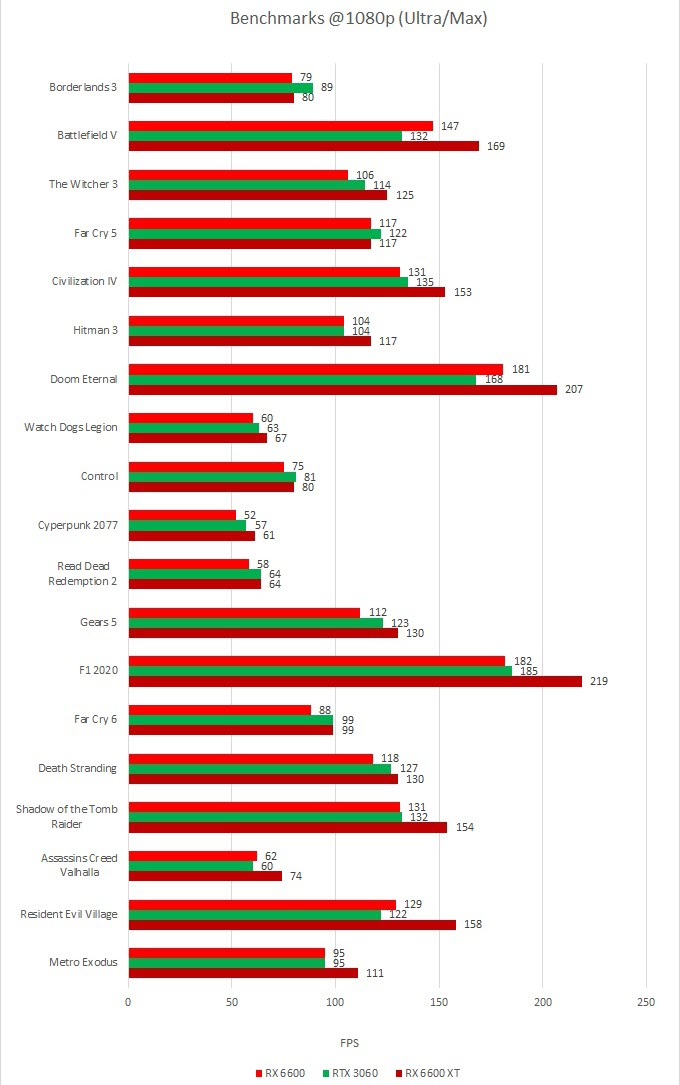
1440p Benchmarks
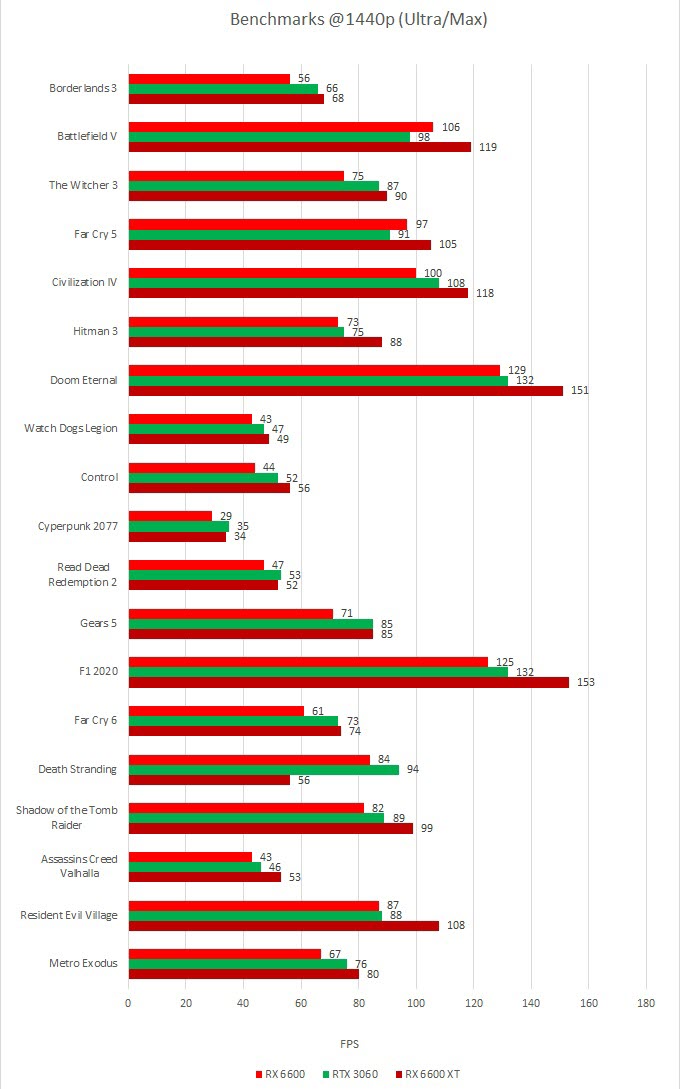
When it comes to 1080p gaming then the performance of the RX 6600 is very close to that of RTX 3060. We can say that on average, RX 6600 is only 4% slower than RTX 3060 at 1080p gaming. However, the performance gap between RX 6600 and RTX 3060 grows much wider at 1440p gaming and makes RX 6600 10% slower than RTX 3060. On the other hand, RX 6600 XT is the fastest card in this comparison. It is about 13% faster than RX 6600 at 1080p gaming and about 18% faster at 1440p gaming. When compared to RTX 3060, RX 6600 XT is about 9% faster at 1080p and around 8% faster at 1440p gaming.
Power Consumption
The most power-efficient card here is the RX 6600 with a power consumption rating of 132W. On the other hand, the card with the highest power consumption is the RTX 3060 and it is rated at 170W. Radeon RX 6600 XT sits in between the two having a power consumption rating of 160W.
| RX 6600 | RTX 3060 | RX 6600 XT | |
| Power Consumption | 132W | 170W | 160W |
| Recommended PSU | 450W | 550W | 500W |
Pricing and Availability
The base MSRP of RX 6600 is $329 while that of RX 6600 XT is $379. On the other hand, the RTX 3060 retails at $339 in terms of base pricing. The custom models of these cards from various AIBs do cost more depending on the cooler design and features offered. You can check the current prices of these cards from the links given below.
Check RTX 3060 Price on Amazon
Check RX 6600 XT Price on Amazon
RX 6600 XT vs RTX 3060 vs RX 6600 XT Specifications
| RX 6600 | RTX 3060 | RX 6600 XT | |
| GPU Chip | Navi 23 XL | GA106 | Navi 23 XT |
| GPU Architecture | RDNA 2 | Ampere | RDNA 2 |
| Fabrication Process | 7nm | 8nm | 7nm |
| CUDA Cores/Stream Processors | 1792 Stream Processors | 3584 CUDA Cores | 2048 Stream Processors |
| Ray Tracing Cores | 28 | 28 | 32 |
| Tensor Cores | NA | 112 | NA |
| Memory Size | 8GB GDDR6 | 12GB GDDR6 | 8GB GDDR6 |
| Memory Interface | 128-bit | 192-bit | 128-bit |
| Memory Speed | 14 Gbps | 15 Gbps | 16 Gbps |
| Memory Bandwidth | 224 GB/s | 360 GB/s | 256 GB/s |
| Bus Interface | PCI Express 4.0 | PCI Express 4.0 | PCI Express 4.0 |
| DirectX | 12 Ultimate | 12 Ultimate | 12 Ultimate |
| OpenGL | 4.6 | 4.6 | 4.6 |
| Vulkan | 1.2 | 1.2 | 1.2 |
| SLI/CrossFire | No | No | No |
| VR Ready | Yes | Yes | Yes |
| G-Sync/FreeSync | Yes (FreeSync) | Yes | Yes (FreeSync) |
| Power Consumption | 132W | 170W | 160W |
| Recommended PSU | 450W | 550W | 500W |
See also:
Final Thoughts
Well, RX 6600 is a good card for 1080p gaming but it would have been a great 1080p card if it was priced significantly lower than RTX 3060. It is because you can get RTX 3060 at slightly more bucks and it is a much powerful card that not only shines in 1080p gaming but is comparatively powerful for 1440p gaming too. Also, you get extra 4GB video memory that can be helpful in the latest AAA games with heavy textures and for games third-party mods. Talking about RX 6600 XT, it is quite a fast card and is suitable for both 1080p and 1440p gaming. However, its comparatively higher pricing and significantly less memory compared to RTX 3060 makes it a little less appealing. Moreover, with RTX 3060, you get better Ray Tracing and it also supports DLSS that the Radeon cards lack. In the end, I would like to say that If I had to choose between them and there are no availability issues then I would prefer RTX 3060 over the two. If you want to ask something or want to express your views then please let me know in the comment section below.
(*This post may contain affiliate links, which means I may receive a small commission if you choose to purchase through the links I provide (at no extra cost to you). Thank you for supporting the work I put into this site!)
